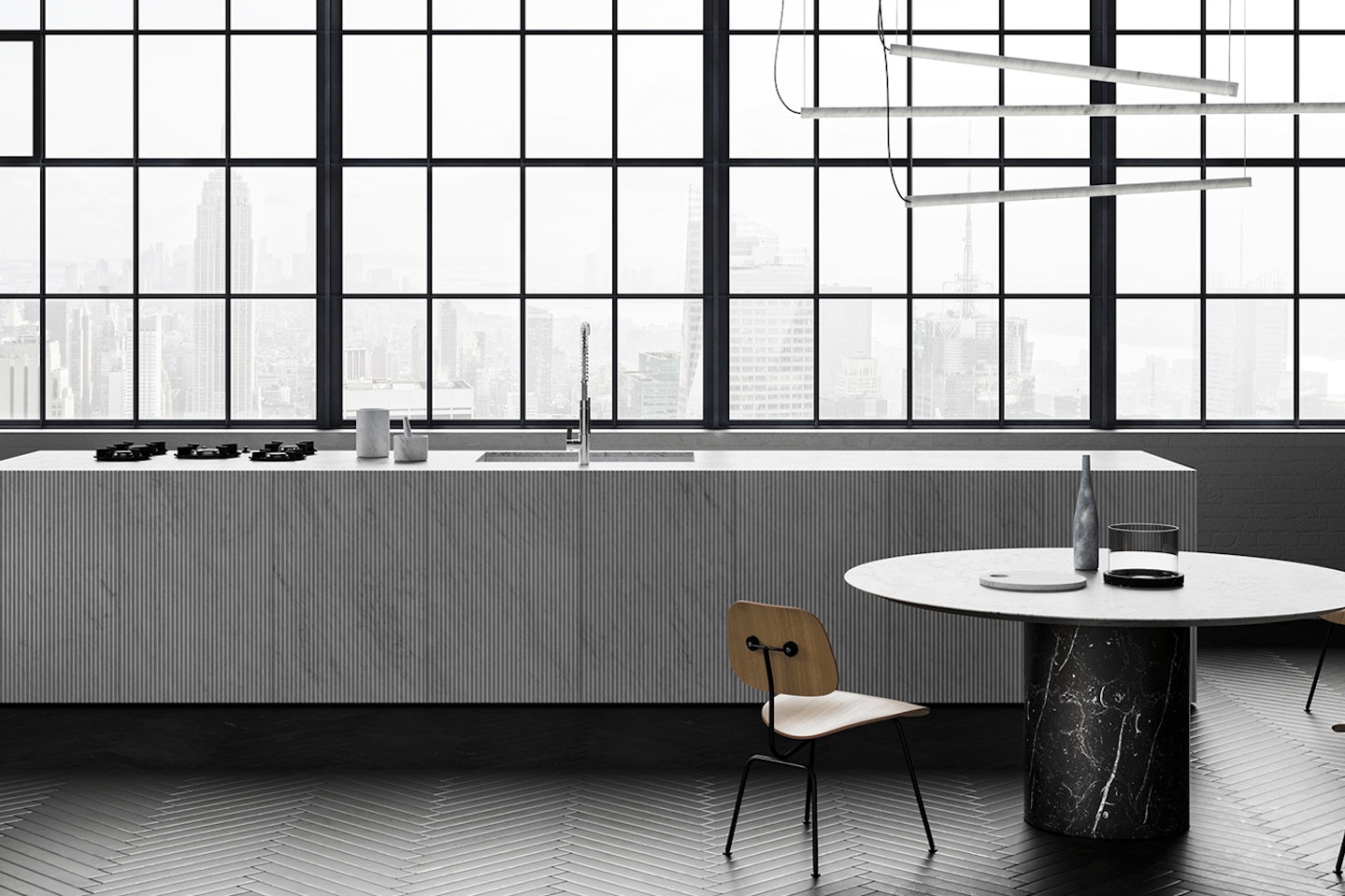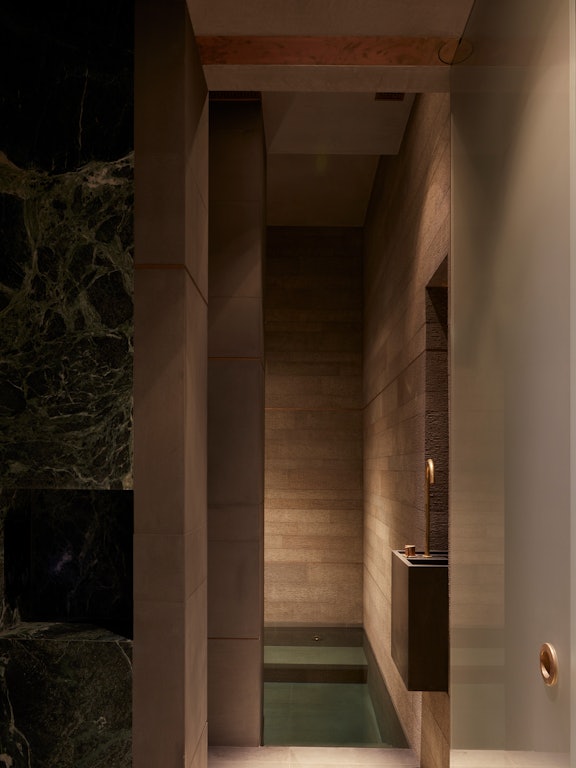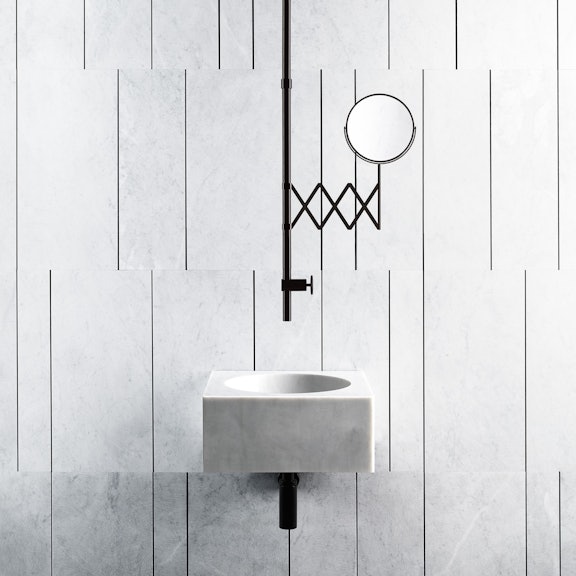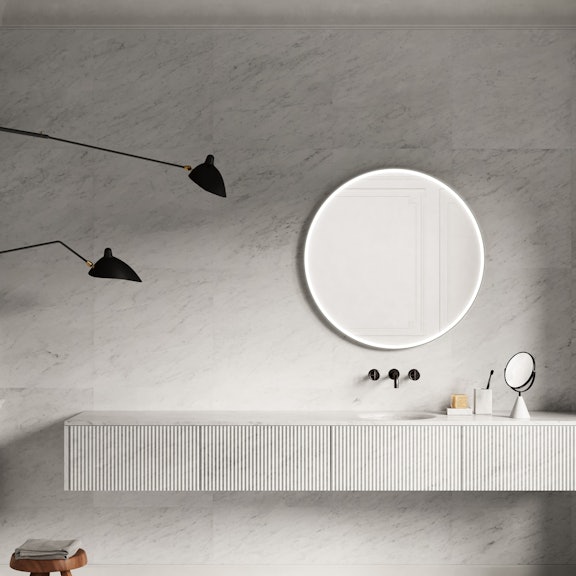3 tips to help you choose the perfect kitchen sink in natural stone
03.2022
A natural stone kitchen sink never fails to delight, transforming daily routines into moments of pleasure, but what do you need to know before finalising your choice?
The charm and magic of a kitchen sink and countertop in natural stone
Brimming with character and personality, a natural stone sink and worktop can transform a kitchen, no matter what the style. From contemporary and sleek environments to more rustic or traditional décors, natural stone never fails to make a statement.
Marble and limestone benchtops and sinks are not only beautiful to look at and touch, but they are also hardwearing and destined to last for decades, if not longer.
We take a look at what makes a kitchen sink in natural stone such a winning choice and offer three smart tips to help you choose the perfect combination.
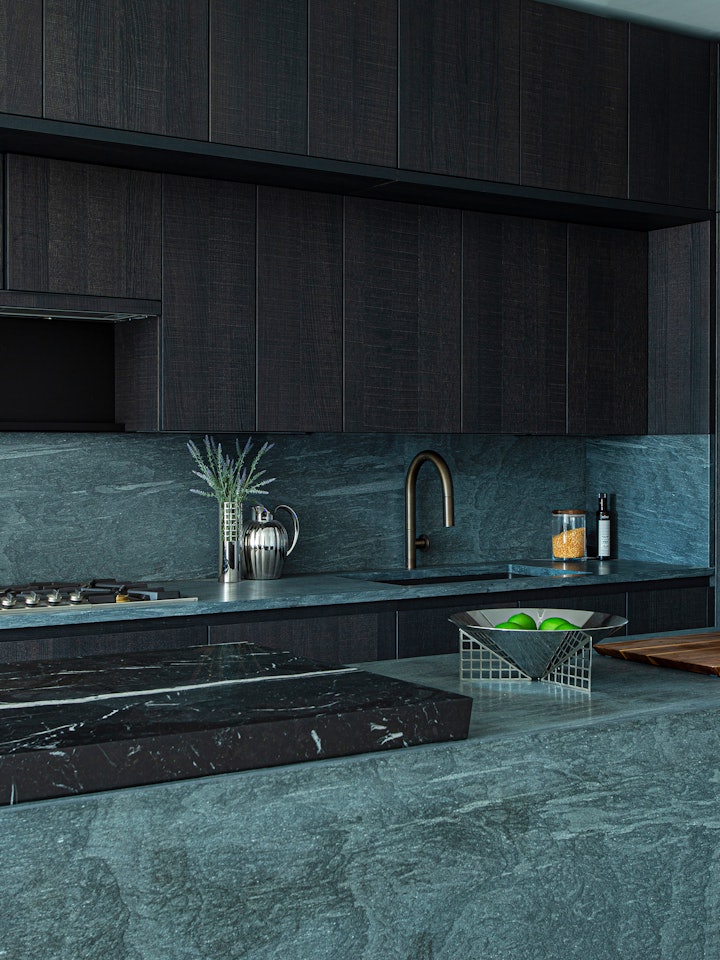
Why choose natural stone for your kitchen sink and worktop?
The kitchen is often described as the heart of the home and the sink and worktop zone probably comes second in importance only to the oven or fridge as a key element. It is the place where we drain and prepare food, rinse vegetables and wash the dishes, making it a highly multifunctional and hardworking workstation. That means that whatever material it is made from needs to be not only aesthetically pleasing but tough, easy to clean and able to stand up to daily usage.
atural stone ticks all the boxes as it is extremely resistant and easy to clean. These practical aspects, together with the range of colours and effects available make it a great solution if you are looking for a timeless material that will maintain its beauty over the years, regardless of the décor trends that come and go.
The first question is, of course, the type of stone you want to use and here the two key considerations are appearance and absorbency.
Generally speaking, most marbles are less absorbent than, for example, a limestone or sandstone, but if you apply a quality protectant and look after your sink, you can feel pretty confident about choosing any stone. The key point that we want to underline here is that all stone sinks and worktops must have adequate protection in the form of a water-repellent sealant. Then, like any material, you simply need to adopt a simple but regular cleaning routine to care for your gorgeous natural stone.
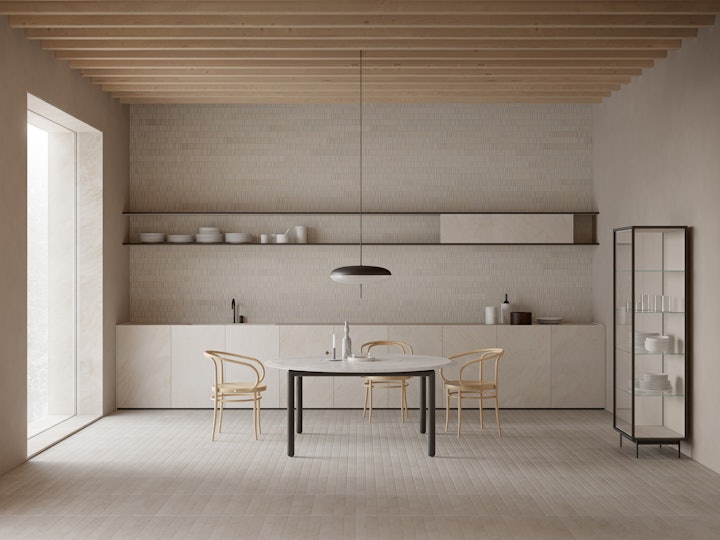
How to choose the right type of natural stone kitchen sink
Before the advent of modern manmade materials, sinks were often made by carving out blocks of stone. As built-in kitchens became more widespread and homes became more compact, however, there was a rise in demand for more lightweight models made from lighter materials. That didn’t mean that natural stone disappeared completely. Manufacturers came up with solutions using assembled pieces that allowed clients to enjoy the charm of a natural stone sink without the weight implications.
This leads us to the first key question: do you want a continuous single block of stone carved to create your sink within it or an assembled unit?
The first option is a more faithful iteration of the types of sinks and basins that have been used throughout the centuries. While it has cost and weight implications, a seamless piece of natural stone in your kitchen is something truly extraordinary. It also enables you to have rounded curves inside the basin if you so wish, whereas this cannot be achieved with an assembled unit.
By assembled unit, we mean that the various pieces will be cut separately (usually to a thickness of around 2 to 3 cm) and then glued together using a resin, resulting in clean, sharp lines. The advantages here, compared to a single block of stone, are that it weighs significantly less and that the cost will also be lower. While it cannot quite capture the allure of a sink carved entirely out of a block of marble, it is a practical compromise if you have your heart set on natural stone (and why wouldn’t you?!).
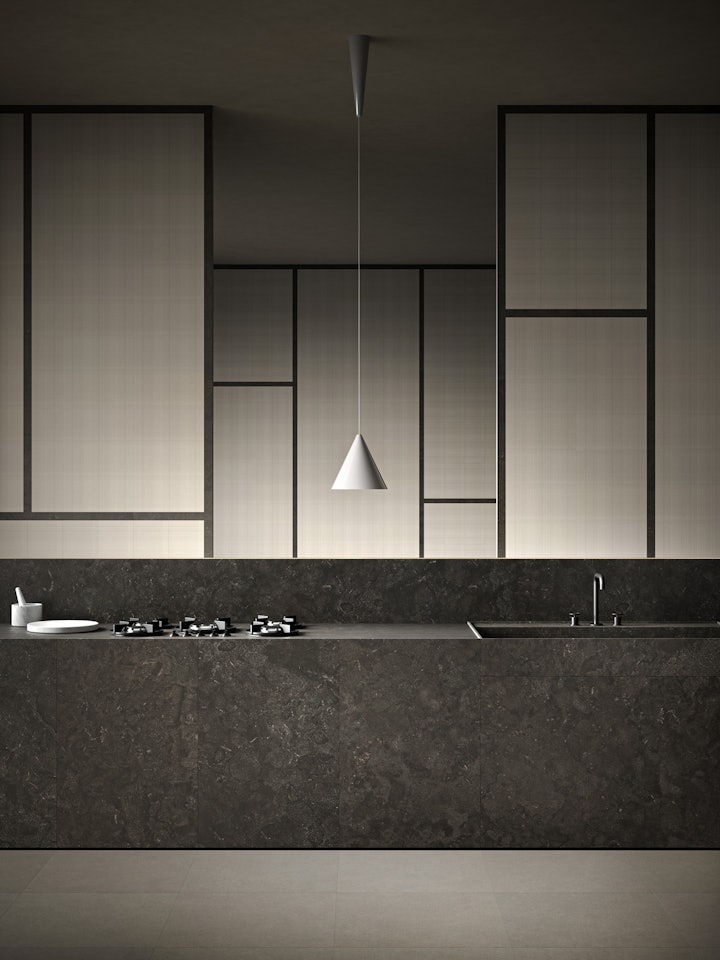
How to use natural stone to best advantage in your kitchen
The second piece of advice is to think beyond the sink and consider it as the starting point for the look of the entire kitchen, looking at how it can complement or determine the cabinetry underneath and in the rest of the space.
Here’s where it starts to get even more interesting as you may want to think about whether you want to use different materials for your sink and worktop (for example, choosing an apron-style or Butler’s marble sink with a wooden bench) or go for the whole thing in stone. The combination of stone and wood lends a more dynamic feel to the kitchen, especially if it picks up the colour theme of the cupboards or other furniture. Wood is a versatile material that works beautifully with natural stone in neutral tones.
If you prefer a more uniform look, the solution is to opt for the sink and worktop areas in the same type of natural stone. You may even decide to go one step further and choose to clad drawer facings and cupboards in it, either in a simple honed finish or one of our stone textures to add depth and create an designer kitchen that transmits a feeling of understated luxury.
Once you have decided upon the key element of your décor, the rest will fall easily into place as you finalise the finishing touches, from tapware to the items you choose to display on your various kitchen surfaces.
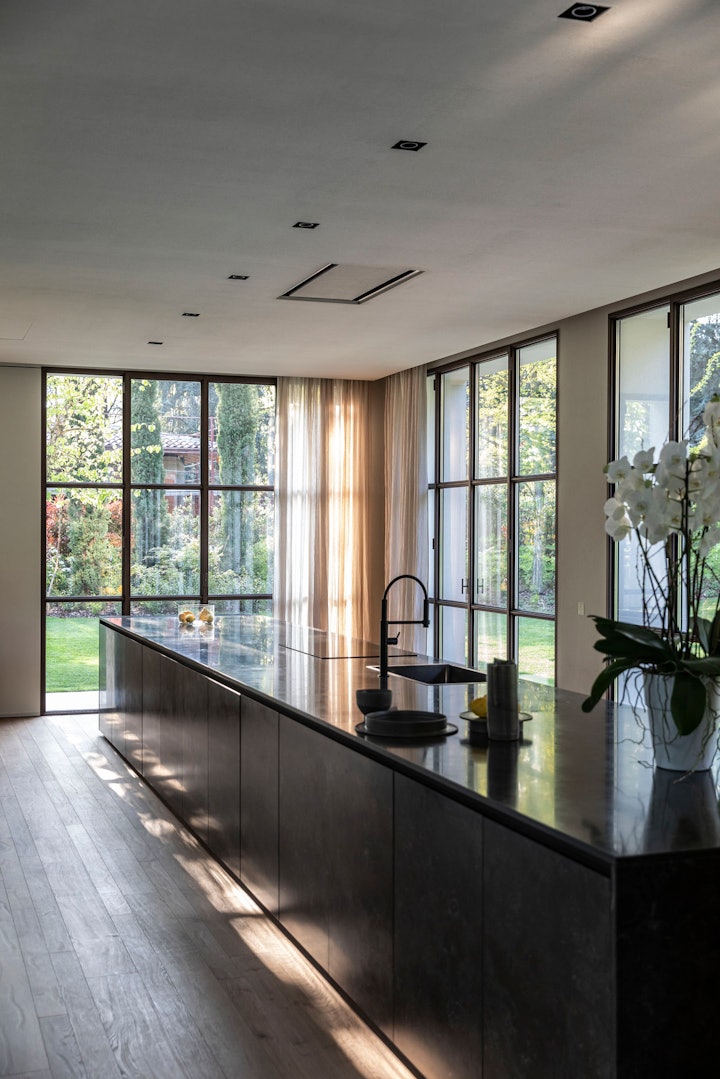
The finishing touches to a kitchen sink
Because a sink is first and foremost a functional item that you’ll be using on a daily basis, the details make a difference in terms of user-friendliness and this is the third aspect to think carefully about. Three elements in particular should be considered here:
Do you want an upstand? This runs behind the sink and bench and helps prevent water and other liquids slopping over and running down the wall. Essentially it is like a raised lip at the back of the countertop and is generally in the same material as the benchtop.
A splashback: do you need one? If your sink is placed close to your stove top, we would say yes, so then you just need to decide upon the look and surface. The key thing is that whatever you choose, you should find it easy to remove the splashes of oil, tomato and other nasties that inevitably escape from the stove top. A splashback is also a great opportunity to make a statement or add a touch of design using patterned tiles, bright colours or textured stone. Our Bamboo, Lithoverde®, Romboo, Stone Parquet and Rain are perfect for this.
Draining surface. It’s entirely optional, but many of our clients ask us to include a grooved, sloped surface on one side of the sink so that the water runs back into the sink when dishes are left to drain during washing up.
In summary, the three main things to take into consideration when you are choosing a natural stone kitchen sink are the type of sink, how it will work with the countertop and cabinetry, and the extra details that finish it off and make it even more user-friendly and practical.
If you are thinking about installing a marble or stone sink and would like some personalised design advice, our team will be delighted to help you. Simply contact us to book a complimentary consultation and start bringing your dream kitchen to life.
